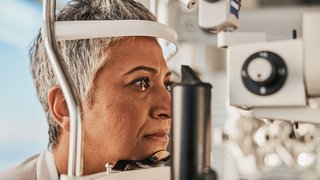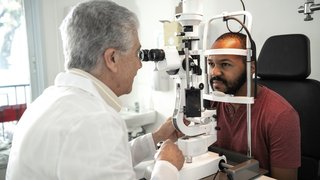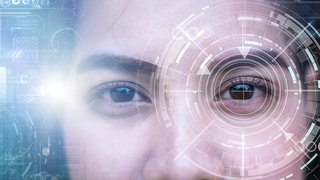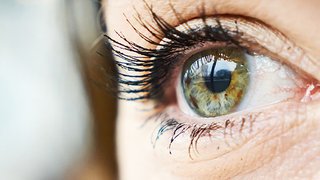Identifying Childhood Myopia (Nearsightedness)
April 9, 2025

Maybe you’ve seen your kids squinting or holding a book or device close to their face. Perhaps they sit in the front of the class at school to see better or frequently complain about headaches, eye strain, or blurry vision.
Chances are your child is among over 40% of the U.S. population with myopia, or nearsightedness. If their vision problems are moderate to severe, they might have high myopia.
What is High Myopia?
High myopia in children increases the risk of serious eye conditions later in life such as cataracts, glaucoma, and retinal detachment – and it is on the rise.
Myopia is measured by the power of a lens needed to correct a patient’s vision using a unit called a diopter. Mild myopia is 0 to -1.5 diopters. When it progresses to -6 diopters or more, it’s classified as high myopia, which affects about 4% of Americans.
Cases of high myopia in 2000 were estimated to be 2.7% of the world’s population, and research suggests that it will affect almost 10% of the world’s population by 2050. The spike is due in part to increased close work with the eyes during childhood, such as more screen time, heavy reading, and limited outdoor play. Over time, excessive close work makes the eyes overly accustomed to focusing on nearby objects and less able to focus far away.
While having high myopia does increase the risk of eye conditions and vision loss, getting proper treatment from a pediatric ophthalmologist allows most young patients to achieve and maintain normal vision as they age.
Signs of High Myopia
Your child may sit closer to the computer or TV or hold devices or books closer to their face to read. Other signs of nearsightedness include:
- Blurred vision
- Eye strain
- Difficulty seeing at a distance
- Headaches
- Squinting
- Trouble seeing at night
What Causes High Myopia?
Nearsightedness happens when the eyeball is too long and egg-shaped or because the cornea – the clear front cover of the eye – is too curved. The result is that light entering the eye doesn’t focus as it should and far away objects appear blurred.
High myopia is often genetic but can develop or get worse with excessive close work. While complications with high myopia are rare, having it does increase your child’s risk of developing eye conditions such as:
- Glaucoma, which increases pressure within the eye and can cause vision loss. High myopia can increase the risk of glaucoma by 50%.
- Cataracts, which appear as cloudiness in the eye and block vision. People with high myopia are 17% more likely to need cataract surgery compared with less myopic peers.
- Myopic macular degeneration, a common condition that involves tears in the retina and bleeding beneath it. People with high myopia have a sharply increased risk as they age.
- Retinal detachment is when the retina pulls out of position, potentially causing vision loss. Having high myopia increases the risk by fivefold or more.
Related reading: Cataracts in children: Prevent vision loss with early detection and treatment
Diagnosing and Treating High Myopia in Children
The earlier childhood nearsightedness is diagnosed, the better the chances are of stopping it before it gets worse. Ideally, high myopia will be diagnosed before age 12 since children’s eyes are usually done developing by age 15.

If your child has high myopia, the ophthalmologist will carefully examine their eyes by dilating their pupils every six months instead of every 12 months to watch for changes in the eye.
High Myopia Prevention
There is no surgery to correct high myopia, but there are strategies to reduce high myopia in children.
- Some patients may also need a low dose of atropine in the form of nightly eye drops that have been shown in clinical trials to safely reduce the progression of myopia.
- Research has shown that multifocal contact lenses can also slow progression of myopia in children as young as age 7.
Limiting close work and taking appropriate, frequent breaks can help stop nearsightedness from progressing.
- Screens and books are part of daily life, but you can protect your child's eyes by having them follow the 20-20-20 rule: After every 20 minutes of close work, take a 20-second break to relax your eyes and look at something at least 20 feet away.
- Playing outdoors or even gazing out the window is a great way to give the eyes a break.
Related reading: What to do if your child fails their school vision screening
Most children with high myopia will not develop complications if they get proper, ongoing eye care. But if your child has a sudden increase in floaters, shadows, or a dark curtain in their vision, talk with their doctor right way. This could be a sign of retinal detachment that could lead to permanent vision loss.
To make an appointment for expert eye care, call 214-456-7947 or request an appointment online.
“Parents of children with myopia tend to be concerned about the possibility of myopia progressing and developing complications, but that worry is often unnecessary.”
Jessica Thayer, M.D.











